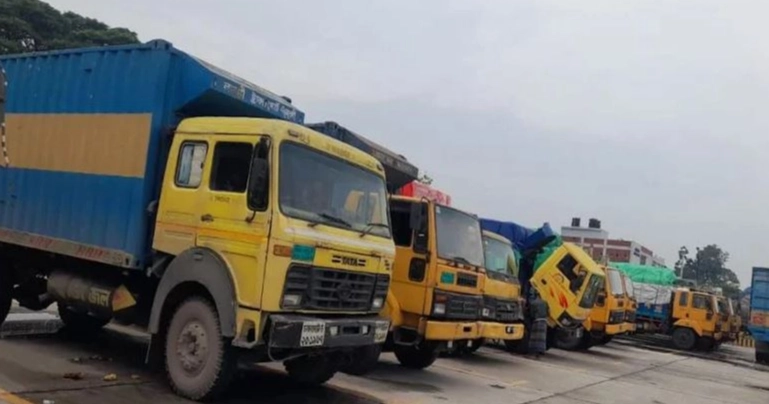Indian media outlets have closely followed their government’s recent decision to restrict certain Bangladeshi exports—mainly ready-made garments and processed foods—through land ports to India’s northeastern states and beyond.
Announced by the Directorate General of Foreign Trade (DGFT) on 17 May, the move is widely portrayed as a measured, reciprocal response to trade barriers imposed by Bangladesh.
These steps, especially the April 2025 ban on yarn through key land ports, have disrupted bilateral trade and raised alarm in Indian policy circles.
Major Indian outlets such as The Hindu, The Times of India, and Business Today have reported that India’s trade restrictions on Bangladeshi exports stem not only from immediate trade disputes but also from broader concerns over Bangladesh’s interim government.
The restrictions are strategically targeted, focusing on exports to India’s Northeast and goods transiting through India to other markets—routes Bangladesh has traditionally relied on to access global trade hubs.
According to the Global Trade Research Initiative (GTRI), the curbs could impact around 42% of Bangladesh’s exports to India, valued at roughly $770 million, with the garment sector being the most affected.
The Indian Express noted that these exporters may now be forced to shift to more expensive sea routes, such as through Kolkata and Nhava Sheva, eroding Bangladesh’s logistical advantages.
The Times of India stressed that the move aims to “restore equality,” highlighting that India had previously provided open market access while facing restrictions from Dhaka.
Indian media coverage has largely supported the government’s decision.
India Today and NDTV India described the move as a significant economic blow to Bangladesh, particularly its garment industry.
ET Now framed the move as essential to ensure the Northeast is not treated as a “captive market” without reciprocal access for Indian goods.
Some reports, including CNBC TV18, suggested the restrictions could benefit local industries in the Northeast by reducing reliance on Bangladeshi imports.
However, The Hindu and Yahoo News raised concerns about the long-term impact on regional cooperation, warning that continued trade frictions could undermine broader South Asian integration.
While most outlets echoed the government’s framing of the move as a strategic and proportionate response, Business Today offered a more balanced view. Quoting Bangladeshi media such as The Daily Star and bdnews24.com, it acknowledged growing frustration in Dhaka and highlighted the economic strain on Bangladesh’s export-driven economy.
Even these more critical perspectives, however, largely treated the restrictions as a response rather than an aggressive escalation.
On social media and in official news briefs, outlets such as ANI and DD News reiterated the Indian government’s position, focusing on fairness and sector-specific impacts.
Hindustan Times framed the issue within the broader context of India’s increasingly assertive foreign policy.


